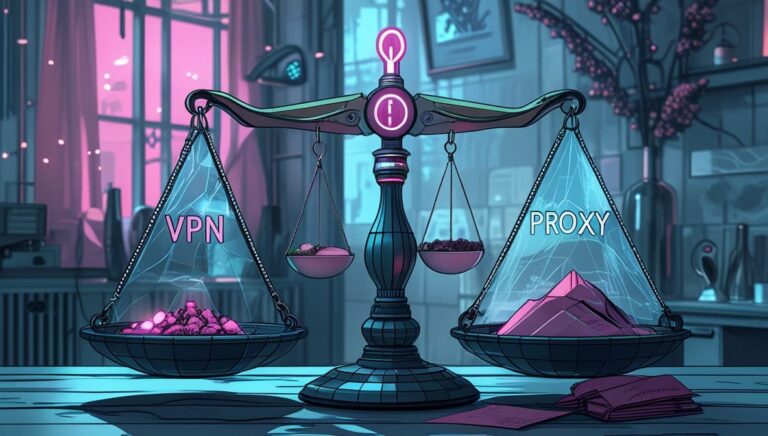What is DNS Leak and Why I Should Test It?
Imagine that a VPN is your “tinted car”: the windows are darkened, the route is hidden. But every time you ask for directions, you shout the destination address at the entire intersection. On the Internet, DNS queries play the role of these “screams”.: they tell you which domains you’re trying to open. A DNS leak occurs when these requests bypass the VPN tunnel (for example, to the DNS provider or router in the hotel). The IP page data can be encrypted, the IP changed, but the route (list of sites) remains visible.
Why is it important to check?
- Because “VPN enabled ≠ privacy”. Without the test, you don’t know where the DNS really goes.
- Because networks are changing: everything is OK at home today, tomorrow, but there will be a leak at the airport due to an imposed DNS.
- Because updates to the OS/browser/VPN client sometimes “break” the routing.
- Because consistency is important: IP from VPN and DNS resolver from the same autonomous system (ASN) are good; VPN in the Netherlands and DNS from your ISP is a red flag.
When to test: when connecting to a new Wi-Fi, after changing the VPN server, after updates, and just once a month – as an element of digital hygiene. Mini-algorithm: launch whoerip.com → check the results with the expected DNS from the VPN → double-check on browserleaks.com/dns → compare if necessary whatismyip.com with DNS ASN. If the provider/hotel is “glowing”, there is a leak.
What Are the Risks of DNS Leak?
A false sense of security. You think you’re “under a cloak,” but in fact you reveal the fact of visiting sites, the time of activity, and sometimes the real IP (through side mechanisms). This is metadata, but it is the metadata that is most often used for tracking.
- Loss of privacy and tracking. The provider, the owner of the public network, or third parties see which domains you are requesting, build behavioral profiles, target ads, and use price discrimination.
- Censorship and blocking. Many filters work precisely at the DNS level. If the requests don’t go through a VPN, you’re back under regional bans, captchas, “gray” pages, and throttling.
- Deanonymization and “gluing” of accounts. IP/DNS inconsistency (VPN in one place, DNS at the ISP) helps anti-fraud systems link sessions and accounts, increasing the risk of bans in advertising cabinets/social networks.
- Business risks. Leakage of internal hostnames (such as jira.company.local and prod-db.company.com) reveals the infrastructure’s structure, the technology stack, and potential attack points. These are reputational and legal consequences (compliance with policies and regulations).
- Connection security. An evil router/provider can impose a fake resolver (DNS hijacking), substitute responses, lead to phishing copies of sites, and insert tracking.
- Operational failures. Inconsistent DNS causes CAPTCHAs, strange logouts, instability of applications and APIs, which appears to be the “Internet is buggy” issue, although the problem is actually in the DNS route.
Bottom line: DNS leak is not a “minor leak”, but a hole in the threat model. Regular testing is an easy and quick way to make sure that your anonymity and access to services are not undermined by an invisible crack from below.
| Risk | Description | Example Scenario |
| False Sense of Security | You think VPN hides everything, but DNS queries expose visited domains | VPN in use, yet ISP sees all domains |
| Loss of Privacy & Tracking | ISP or network owner can profile your activity and behavior | Targeted ads based on browsing habits |
| Censorship & Blocking | DNS bypass makes you subject to local filters and restrictions | Blocked sites still unavailable |
| De-anonymization & Account Linkage | Mismatch between VPN IP and ISP DNS reveals identity | Social media accounts banned for mismatch |
| Business Security Risks | Leaked internal hostnames expose infrastructure | jira.company.local visible to outsiders |
| DNS Hijacking & Phishing | Malicious DNS servers can redirect traffic to fake sites | Login page redirected to phishing clone |
| Operational Issues | Inconsistent DNS causes errors, logouts, or CAPTCHAs | API fails, frequent logouts, unstable apps |















